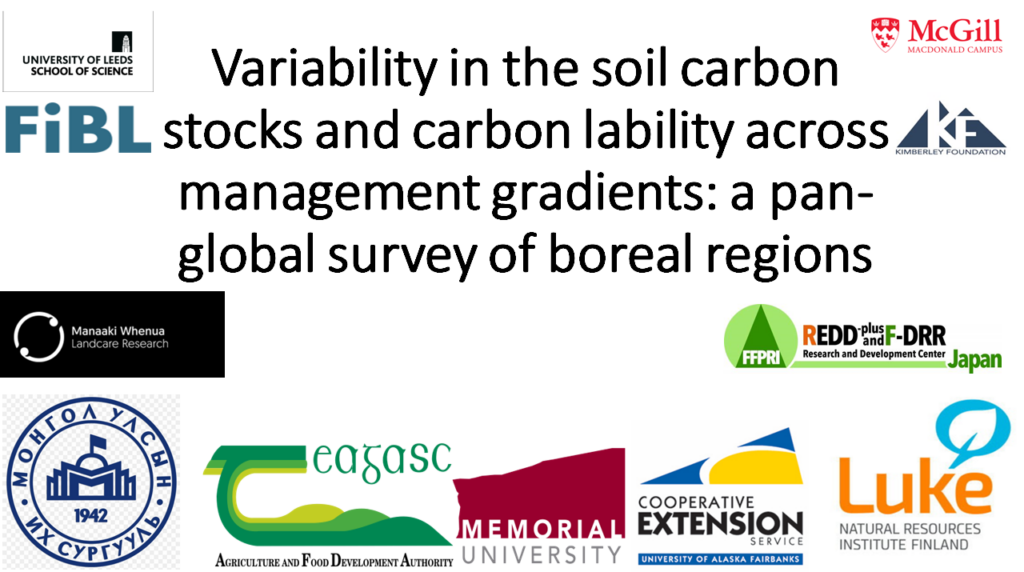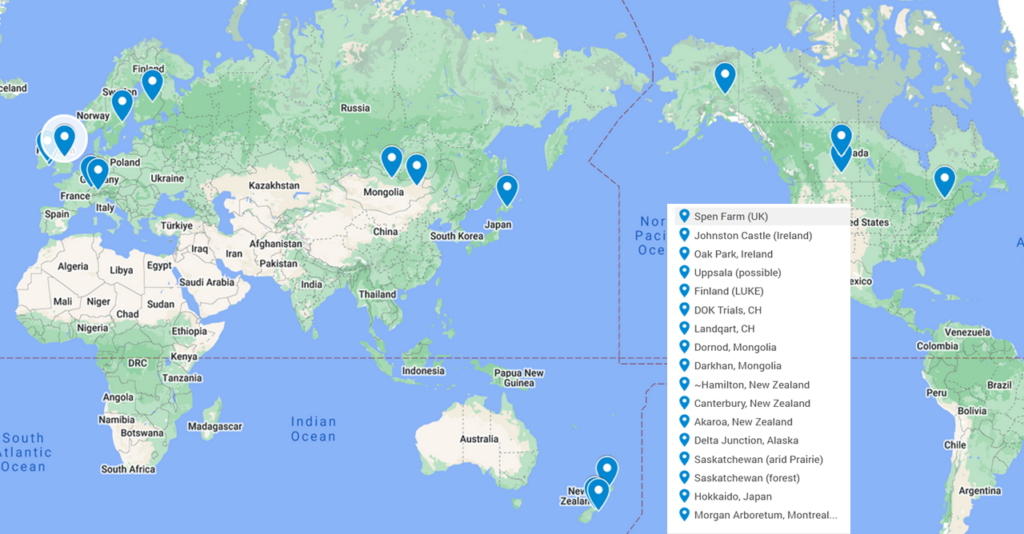Hugh C. Morris Experiential Fellowship (Kimberley Foundation)
The Hugh C. Morris Experiential Fellowship sends a student away from the complacency of their home institution (classroom and laboratory) to study at a variety of relevant locations with partners so as to broaden and expand their experiential knowledge and make them innovative and well-rounded scientists. The 2020 Fellowship was awarded to Jeremiah D. Vallotton, who proposed a global trip to nine countries to allow him to experience global science and agriculture in boreal/alpine landscapes.
Justification:
Globally, boreal forests contain over one-third of global soil carbon, mixed with the largest tracts of wetland soils (themselves >30% pure carbon). However, this zone is understudied and taken for granted compared to smaller contributors such as rainforests. Even within the northern region much attention is paid to the far north permafrost, while the impact of climate change and management at the critical interfaces between the northern temperate and the boreal regions is rarely fully explored. As the Temperate-Boreal Ecotone (TBE) shifts northward, ecosystems will shift and agriculture will follow, which will result in accelerated conversion of natural lands to agricultural uses, also accelerating carbon loss. However, we know very little about carbon dynamics within these soils, how much carbon is stored in stable forms, and how different climatic patterns will affect these dynamics. Using Canada as a microcosm for the world, traveling from east to west across the TBE there is a shift from cooler podzolic forest and bog land to temperate forest, to prairie, to temperate rainforest and then permafrost soils, and this high variability is true globally as well.
It is thus vital that we understand what happens when land management changes, whether particular farming practices cause net sequestration or loss of carbon from soil, and critically, if we can manage carbon. It is not a question of whether boreal lands will be converted to agriculture, but how. If scientists are to be in a position to influence policy-makers, farmers, and society as a whole with sound principles and copious data on soil carbon, studying boreal carbon becomes extremely important in humanity’s adaptation to climate change globally. By partnering with premiere institutions around the world in a variety of locations, by sharing knowledge, collaborating on experiments, and by pooling our diverse views and experiences together, we will be able to make meaningful contributions to the global effort to adapt to climate change.
Activities/Goals:
- Review notable research from the institution (selected by collaborators) to understand their research activities, goals and philosophies prior to the visit
- Visit research institutions, identify relevant research foci, address skill integration across the collaborators, and assess data exchange opportunities
- Identify local management practices and approaches to integration of production and environmental concerns
- Identify soil qualitative parameters relevant to local practices and with an eye towards future experiments involving managed soils from farms or research plots at each location
- Build relationships with local scientists and farmers, and arrange for future collaborations to enable completion of the global component of my PhD research. These collaborations will be variable, as relevant for each location, and will involve partner sampling of soils at visited farm and research sites from the ELP; partners carrying out relevant soil analyses on the soils; and sending sample aliquots to Newfoundland for my analysis as part of my PhD program
Field sampling and testing
Samples were taken on a gradient that was felt to best represent different stages of boreal land as influenced by agriculture. Natural land (forest, sometimes prairie/steppe) to represent natural C cycling; wheat agriculture to represent fully converted/managed land; pasture (preferably grazed) to represent a more C-rich agricultural management; and abandoned (shrubs, small trees, and grass successional) to represent boreal land transitioning back towards a natural state. This allowed the samples to demonstrate how boreal C cycling changes as land is converted, managed, and abandoned without needing a chronosequence.
Sites and collaborators:
Nine initial locations (UK, Ireland, Finland, Switzerland, Mongolia, New Zealand, Alaska USA, Saskatchewan Canada, and Quebec Canada) were selected for visitation; along the way, further collaborations were established in Sweden and Japan. Collaborators included below:






